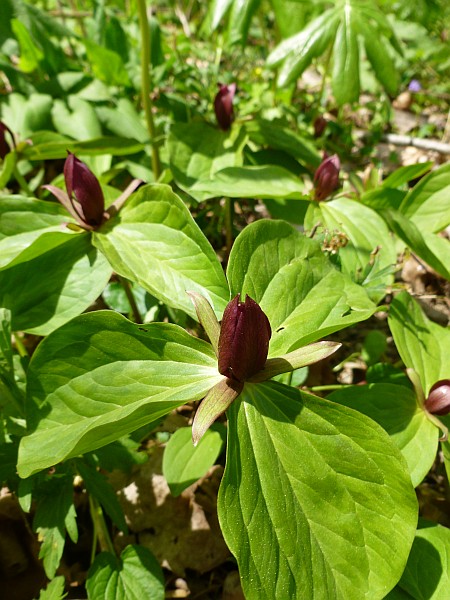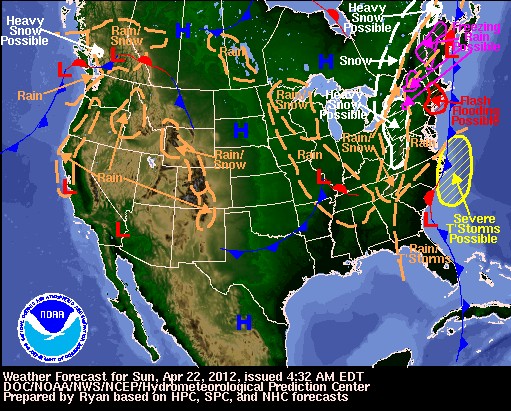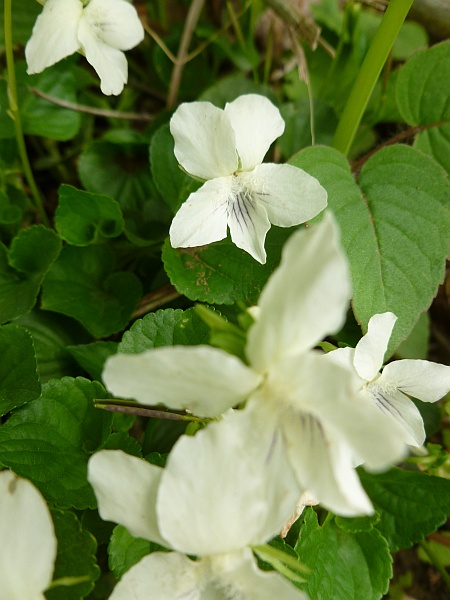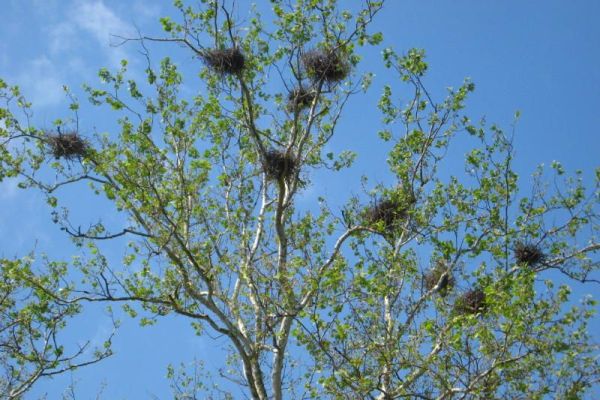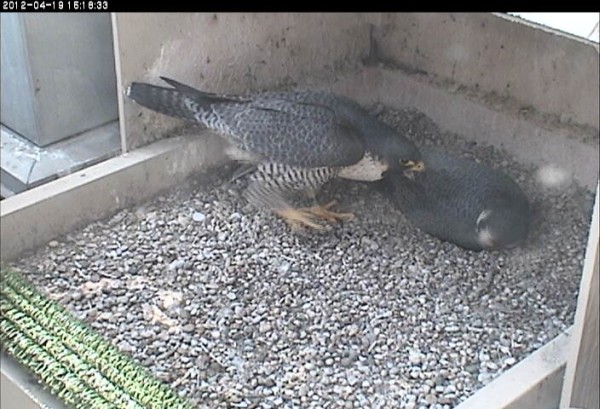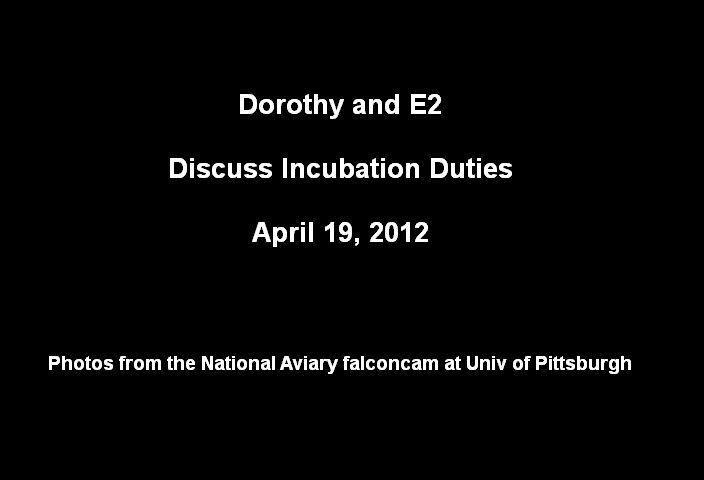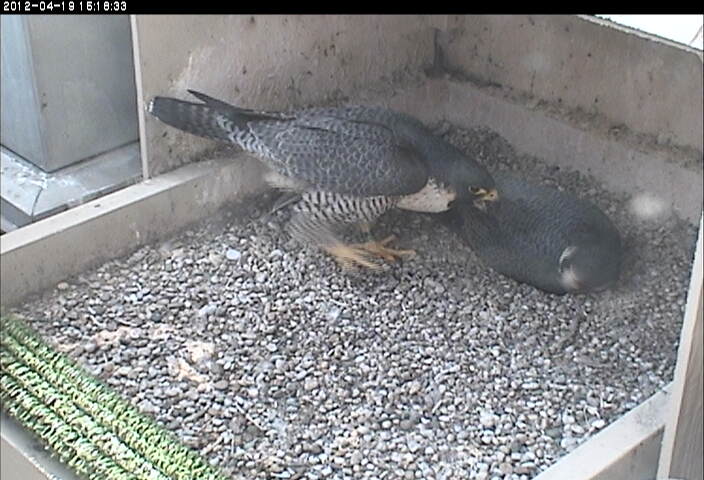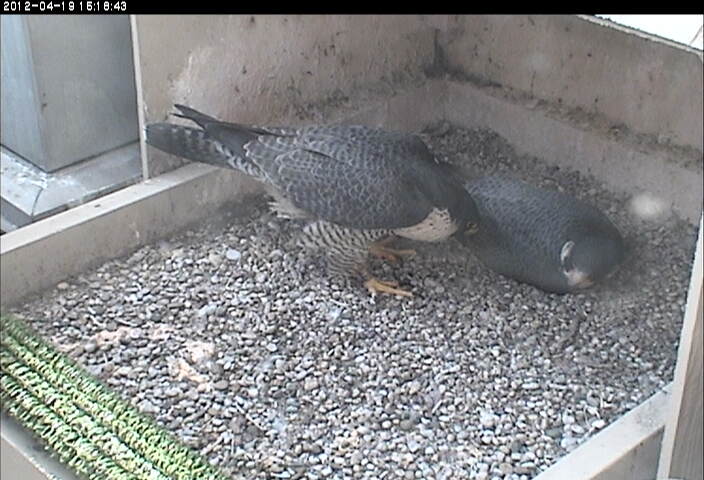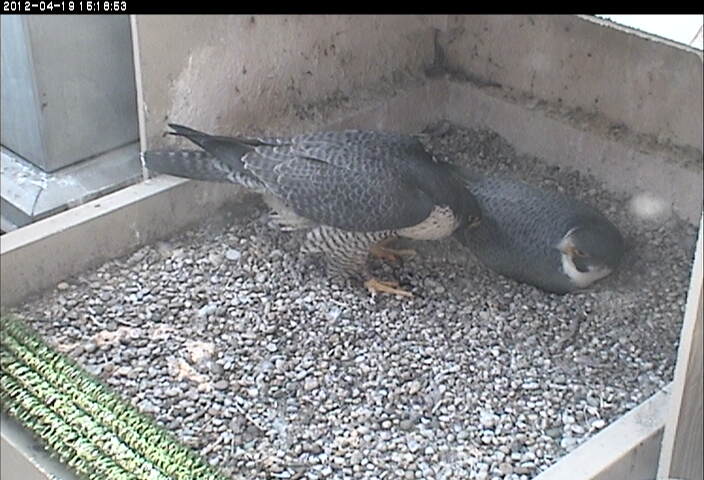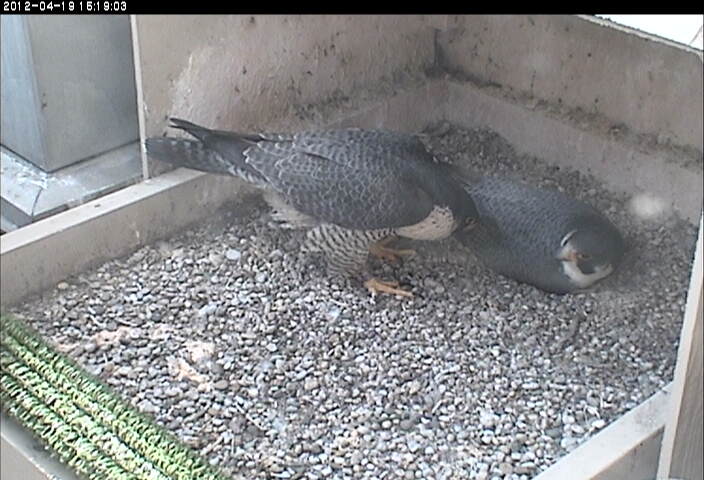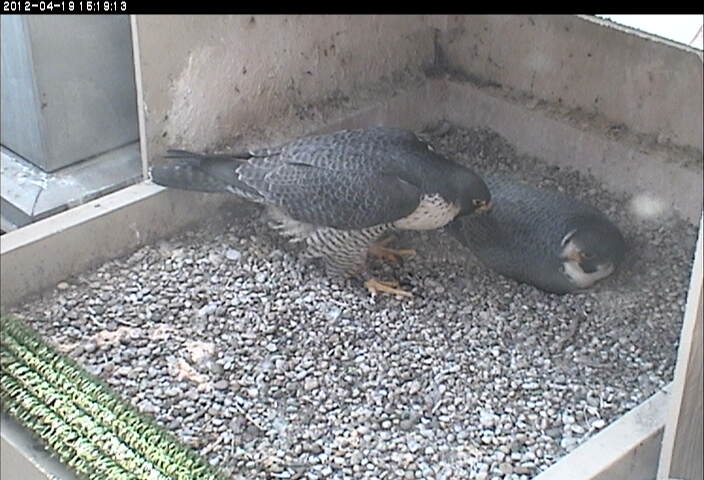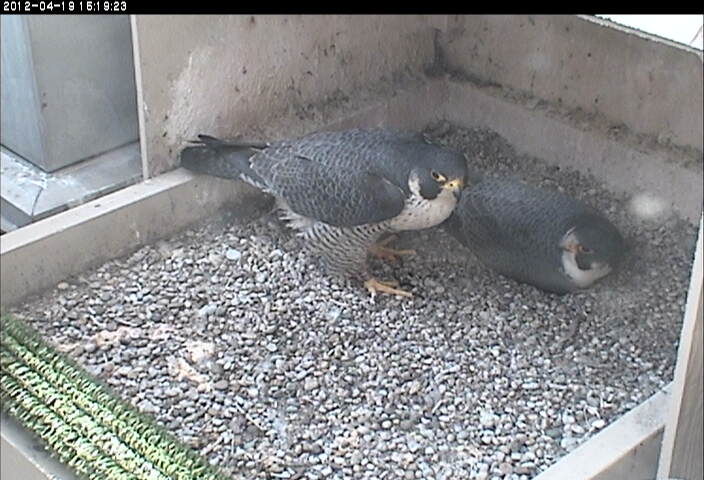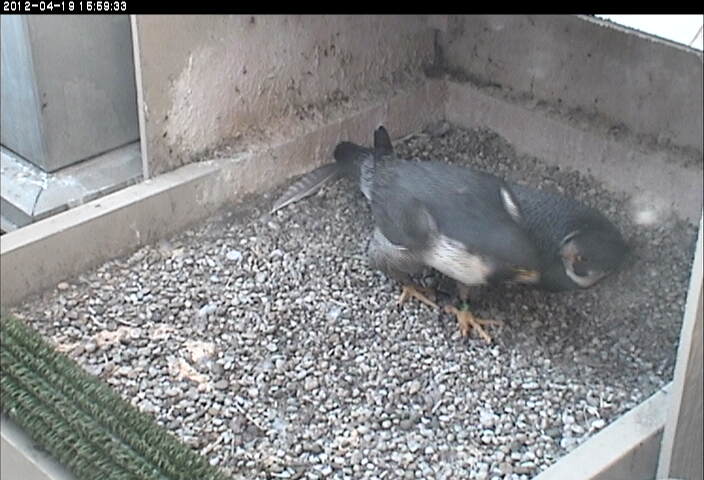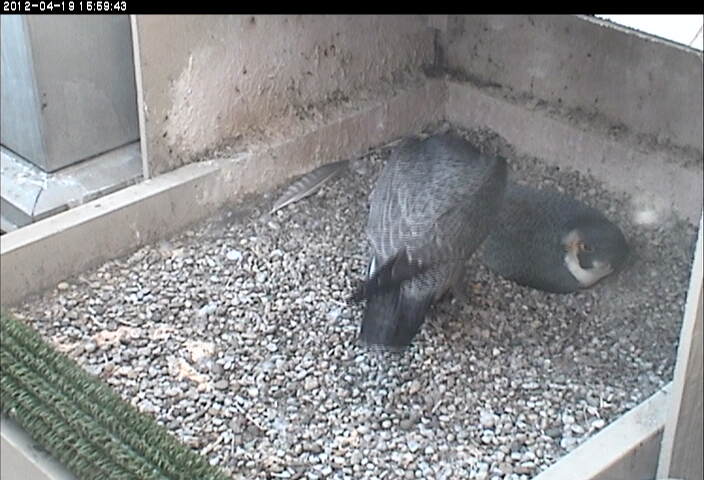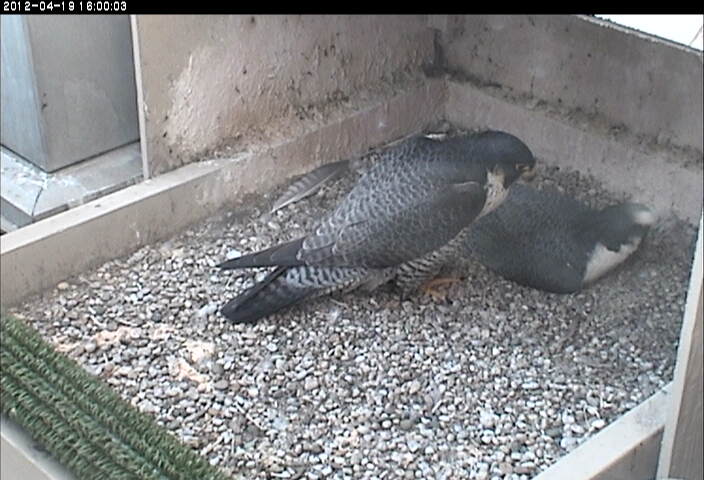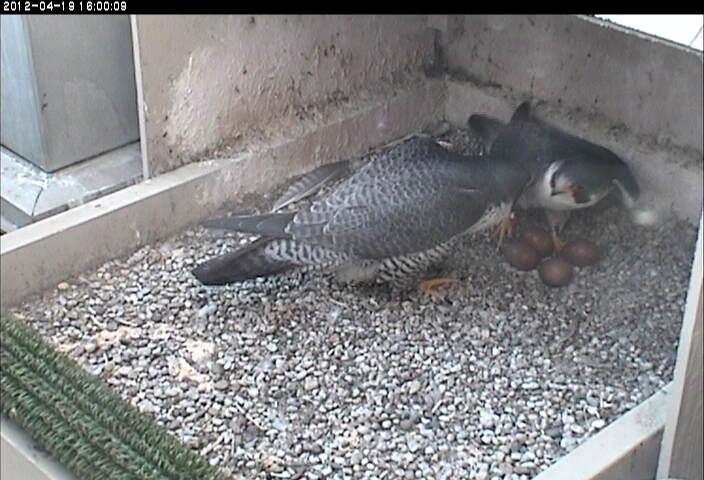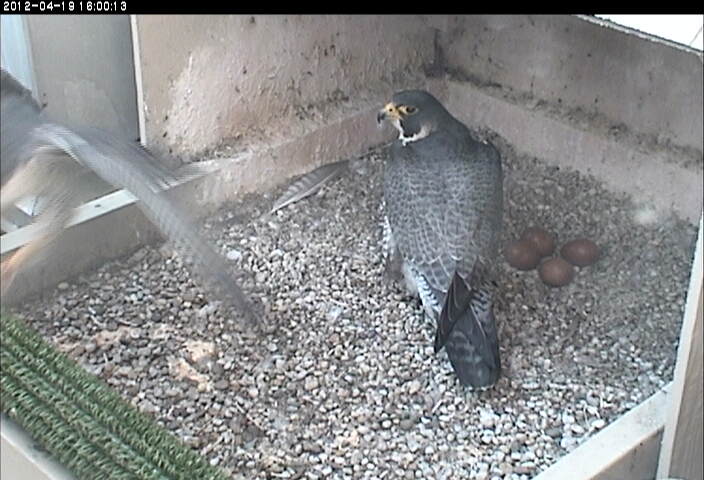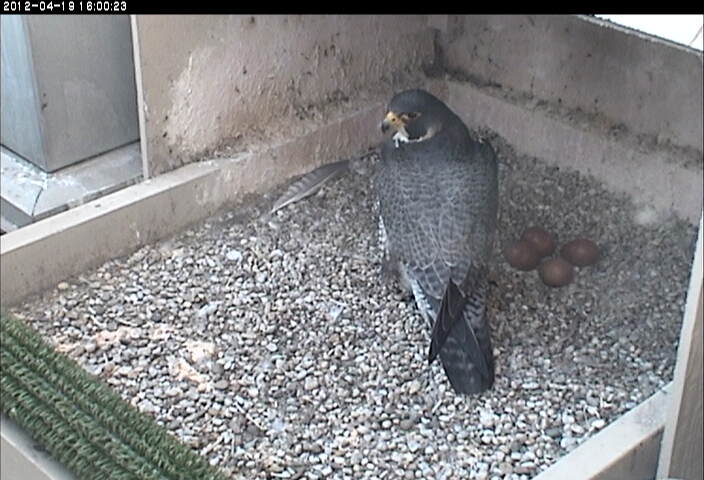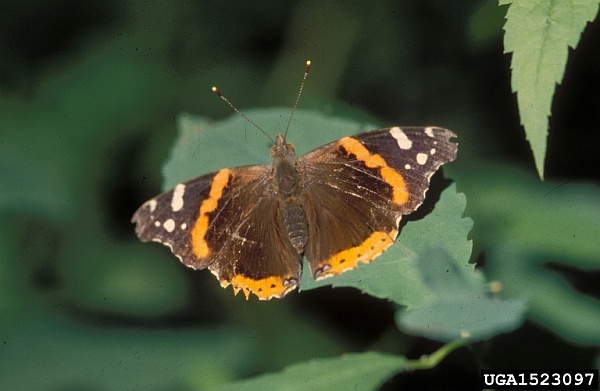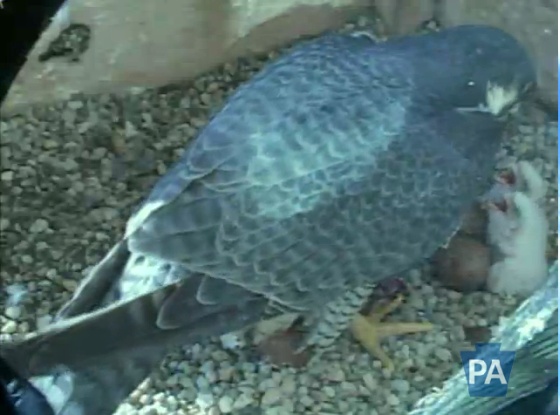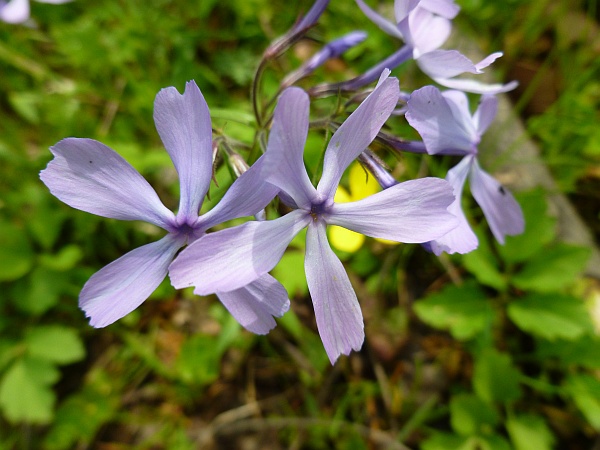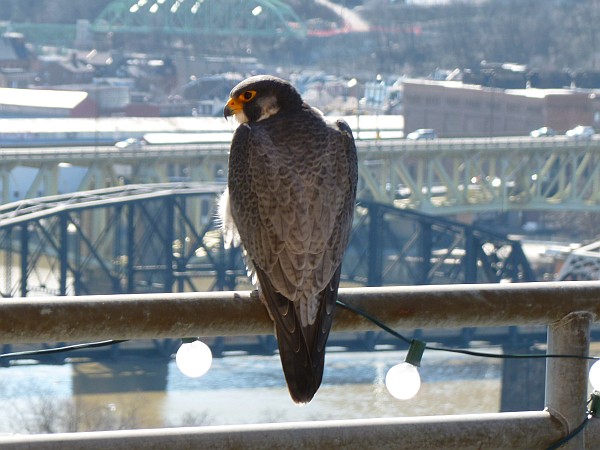
For those of you anxious for news of our Downtown peregrines, I am now able to tell you this …
With a handful of clues and sheer luck I found Dori and Louie’s nest site last month on a Downtown building. This month Beth Fife of the PA Game Commission confirmed they are nesting in an inaccessible spot, so inaccessible that if the young hatch successfully they cannot be banded.
Beth says all is well. Of course, there’s no camera and it is way too late to install one. Dori and Louie’s eggs will hatch around the same time as those at Pitt.
Why am I not telling you where they are?
As I said in an earlier post, peregrines are extremely faithful to successful nest sites but they will leave if they feel the location is no longer safe for raising their young. Dori and Louie were already disturbed away from their original nest. To give them peace at this site, Beth has told me not to reveal the location.
Eventually I will be able tell you the whole story with full credit to those who helped. For now, the nest location is a secret.
Meanwhile, Ann Hohn at Make-A-Wish says that Louie comes back to visit the Gulf Tower occasionally and that his forehead is white this spring. She thinks he had a scratch or injury that became a bald spot.
And so, this photo I posted in early March is probably Dori.
(photo by Dan Costa)
